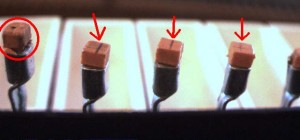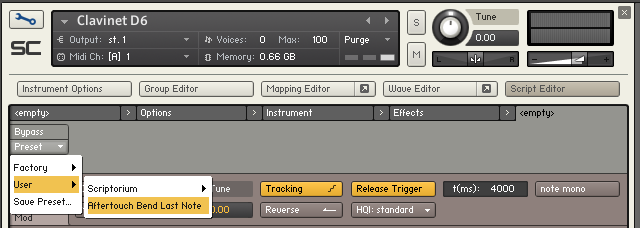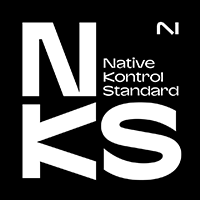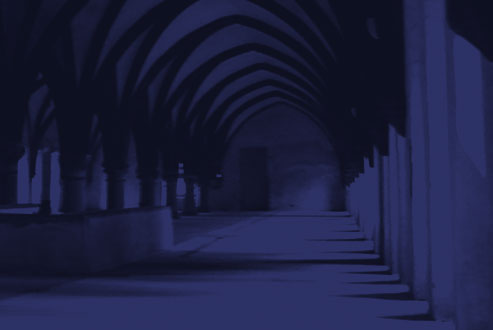Blog Menu
Scriptorium : GeoGenerator
Scriptorium : GeoGenerator
By Dan Powell | 03.09.2013
GeoGenerator is a very simple generative music script. It’s intended to demonstrate that even with a very basic algorithm you can get some interesting results.
Read More
This algorithm simply generates a random note within an octave range, choosing from the note set or scale defined in the script. There are five possible voices (VOICE 1 to 5), each of which can be assigned their own NOTE length, OCTave, % chance of occurrence, and VELocity.
You can see the parameters for each VOICE listed to the right of the panel:
The script is made active with the ‘Geo Generator’ button at the top left, and you can mute the input MIDI there as well if you like. Once active, the script will start playing upon receiving a note, or else when the PLAY switch is turned on.
You can click on the little keyboard to include or exclude notes, or else choose from some PRESET scales. There is an option for HALF TEMPO if you want to use it to generate random backdrops. GeoGenerator will chase tempo changes if used in a sequencer.
LIVE TRANSPOSE allows you to transpose the output of the GeoGenerator with your keyboard. If you play middle C (MIDI 60), the transpose is 0. Above or below middle C will transpose the output.
DOWNLOAD THE SCRIPT
Requires Kontakt 5.1 or later. GeoGenerator works best placed before any other scripts in the KSP chain.
Scriptorium : Cluster
Scriptorium : Cluster
By Dan Powell | 23.07.2013
Cluster is a KSP script that creates tone clusters.
Read MoreYou often hear this kind of effect in horror movie soundtracks, and in certain contemporary classical music. It’s no big secret that I love this sort of stuff.
The script generates extra notes near the input MIDI note, and using a knob or controller you can move the notes nearer or further away from the centre pitch. This is different from a fist cluster on a piano since we generate pitches “in between” the distinct MIDI notes, so these are microtonal clusters in a sense.
You can set the number of Voices between 1 and 12. For each voice there is a deviation amount, seen at the bottom of the interface here as Dev 1 through Dev 12. These are cent deviations from the played pitch. Obviously Cluster will use a lot of polyphony if generating 12 voices for each input note.
The Cluster knob can be controlled with the Deviate CC controller, so you can perform or sequence moving away from unison to maximum cluster and back again to unison. Randomize will generate a set of Deviations within the set Range, and has a gaussian distribution so notes closer to the centre are more likely than notes further away from the centre. In the drop down menu you can set the Deviations to be recalculated for each note if you like.
DOWNLOAD THE SCRIPT
Requires Kontakt 4.2.4 or later.
Close CloseScriptorium : Last Note Pitch Bend Download
Scriptorium : Last Note Pitch Bend Download
By Dan Powell | 16.07.2013
Following the release of our D6 virtual instrument – Clav – some people with real-life experience playing a Hohner Clavinet mentioned that on their instrument they were able to bend the pitch of a note if they pushed down firmly on the keys. The D6 we have in our studio does not do this, however, no matter how hard we press the keys.
Read MoreIt seems that on many Clavinets the hammer tips get worn down over the years, and the key tabs bent out on an angle so that the string is not trapped flush between the hammer and the harp.
 If there is a small gap there you might be able to bend the string slightly since the hammer would have some play. I’m guessing that because we had our unit refurbished with new hammers I’m unable to bend the strings on this instrument.
If there is a small gap there you might be able to bend the string slightly since the hammer would have some play. I’m guessing that because we had our unit refurbished with new hammers I’m unable to bend the strings on this instrument.
Still, pitch bend by pressure is an interesting performance idea, so we’ve written a KSP script to add that feature to our Clav library, and to any other Kontakt instrument for that matter.
KSP SCRIPT : LAST NOTE AFTERTOUCH PITCH BEND
Using this script you can set the bend range in cents, up to a maximum of 2.00 semitones, although I find smaller values feel more “natural” for this slight wobble. The pitch bend works on the last note played only, avoiding the rather synthetic sound of all notes bending simultaneously.
For Clav, this script works best when loaded in the last (far-right) script position. Of course you can use this with any library, not just Clav. If you use it on a harpsichord patch you can create an effect somewhat like an 18th century clavichord.
This kind of feature would work much better with polyphonic key pressure, then each key could be bent independently, but poly AT is quite a rare feature on contemporary keyboards. (Perhaps it’s about to make a comeback?)
DOWNLOAD THE SCRIPT
Requires Kontakt 4.2.4 or later.
Quick Guide : Loading KSP Scripts into Kontakt.
You will need a full license of NI Kontakt ; you cannot edit Kontakt Player patches in this way.
Copy the script (.nkp file) to : User/ Documents/ Native Instruments/ Kontakt 4 or 5/ Presets/ Scripts
Open a Kontakt instrument (.nki) in edit mode, by clicking the Wrench icon shown below

Open the Script Editor, and click on the last tab on the far right , pictured below :
Go to the Script Editor preset menu, and navigate to the User section. You should see your recently added script there. Select it to load.

You can now save the Kontakt instrument (.nki) as a new version, and it will load with the script already in place.
Close Close





